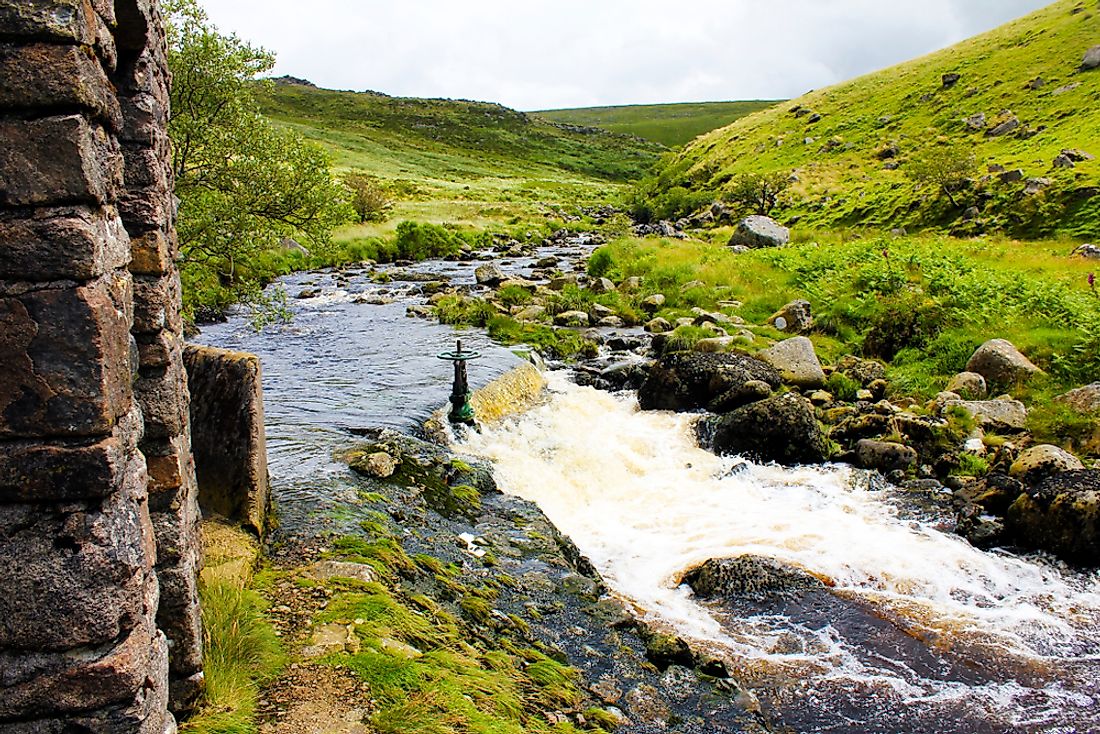What Is A Leat?

A leat is an artificial aqueduct or watercourse that is dug into the ground to supply water to a millpond, watermill, reservoir, irrigation or for household use. The name is commonly used in Wales and England. It is sometimes referred to as a fleam. In Sheffield and other regions of northern England it is referred to as a goit, while in southern England a leat used for irrigation purposes is known as a top carrier.
Design
The length of the leat depends on the distance between the source of the water and its intended destination. However, gravity plays a crucial role in ensuring that the water flows to the destination. Therefore, the source must always be at a higher altitude than the destination. A sluice gate or offtake is used to divert a proportion the water from the river to the leat. The gradient of the leat determines the rate of flow of the water.
Functions
In the 17th century, leats were built in Wales and southern Scotland to supply water to lead, tin, and silver mines. They provided water used to power the mills, hush mineral deposits, washing the ores. Before that, the Romans used leats to supply water to gold mines. The aqueducts sluiced away the topsoil revealing the bedrock, they then removed the debris used powerful waves of water. They leats were also used to supply water to water-wheel and bath-houses. The modern world barely uses leats because of the more efficient water supply systems. However, they are still used in large rice plantations and in the developing world for irrigation purposes.
Drake's Leat
Drake’s/ Plymouth leat was constructed to supply water from the River Meavy to the town of Plymouth in the 16th century. The leat was among the first leats to be constructed in England. Its construction was first proposed the 1560s, but it was not until 1576 that the route was surveyed and decided. The leat was planned to be 17.5 miles long. In 1581, the town’s mayor advocated for the implementation of the plan, and the proposal was submitted to Elizabeth I during a parliament session in 1584. The proposal was passed and cleared for implementation. The construction began in 1590 and completed in 1591. It was six feet wide and two feet deep. Thirty-five men constructed it over a period of four months.
In the early 1600 dispute arose over the diversion of water to tin mills. Corn mills downhill protested lack of water after the diversion, a ruling by the Star Chamber permitted the tinners to divert water as per the stannary law. A decline in the condition of the leat, harsh winters, and population increase meant that the town required a better and reliable supply of water. In 1891 the Burrator Reservoir was constructed. The upper parts of the leat were destroyed after the valley flooded but the lower parts remained intact. Although there were several plans to redevelop the leat, none was ever implemented. During the Second World War, it was partially redeveloped in case the city required an alternative source of water. Today, sections of the leat can be seen at Roborough Down.











